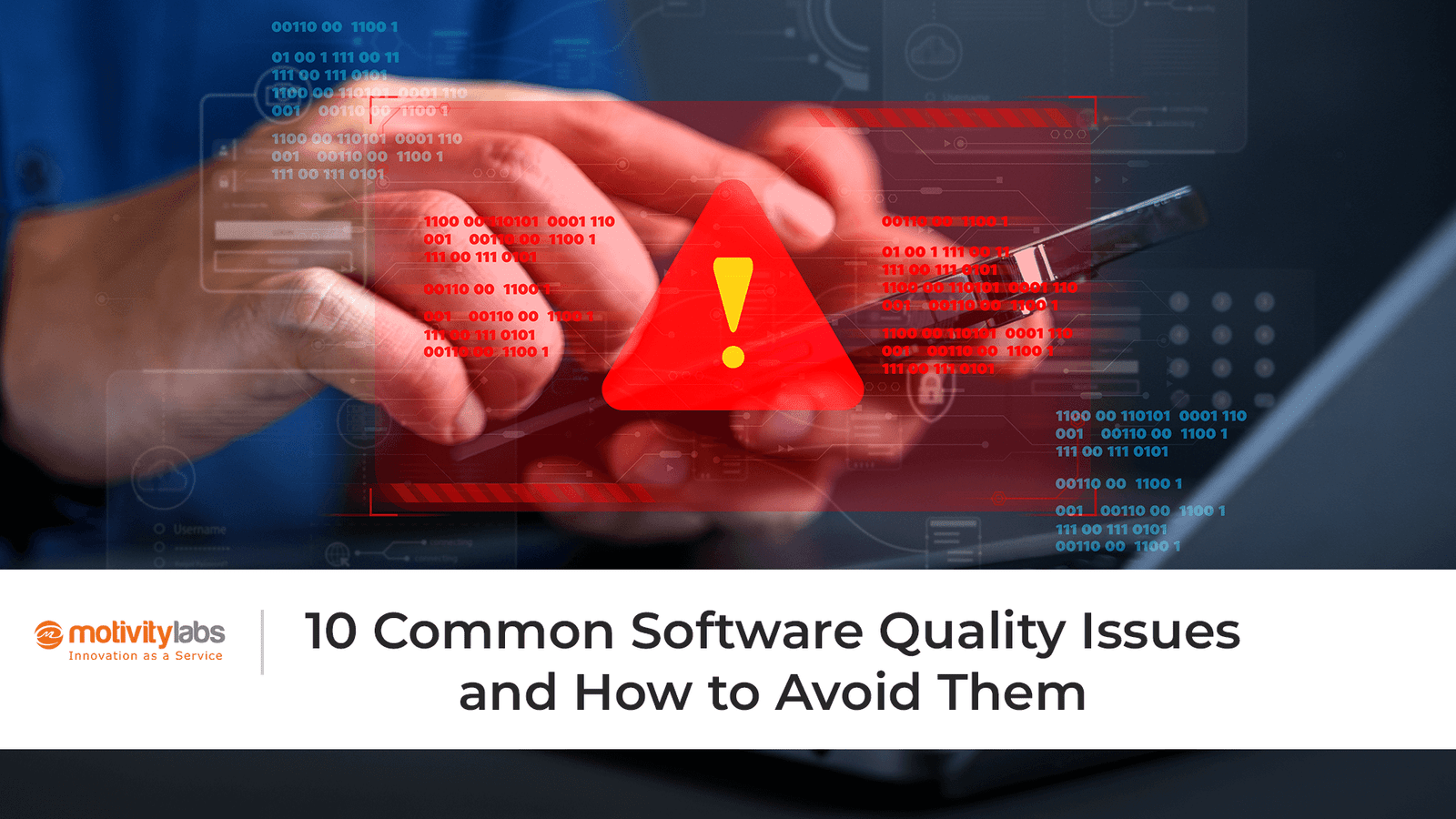In software development, quality is not just a buzzword. It can mean the difference between an app users love and one they delete in frustration. Software that crashes, experiences delays, or functions unpredictably can quickly erode user trust. Addressing software quality issues after a product launch is often costly and can significantly damage a brand’s reputation.
Whether you are building a mobile app, an enterprise platform, or something in between, it is essential to know what might go wrong. Fixing issues early can save you time, money, and reputation. Poor software quality costs U.S. businesses over $2 trillion in a single year; proof that quality is not optional; it’s essential.
Let us break down the 10 most common software quality issues and explore how to avoid them before they become a problem.
1. Bugs That Escape Testing
The issue: Despite multiple QA cycles, some bugs are still in production. These can range from minor UI glitches to major functionality failures.
How to avoid it: Start with a strong test plan. Combine both manual and automated testing. Do not rely on just one approach. Incorporate real-world scenarios and run thorough regression tests. Encourage developers to write unit tests and follow test-driven development (TDD) practices. Do not skip peer code reviews. They can make a huge difference.
2. Poor Code Maintainability
The issue: Spaghetti code. You have seen it. Messy, inconsistent, undocumented code that is nearly impossible to maintain or scale.
How to avoid it: Write clean, modular code. Follow coding standards. Use meaningful naming conventions. Document as you go, not as an afterthought. Adopt version control and enforce code reviews to maintain code hygiene across the team.
3. Inconsistent Performance Across Devices
The issue: Your app runs great on your iPhone 14. But try it on an older Android? Lag, freeze, crash.
How to avoid it: Test across a matrix of devices, operating systems, screen sizes, and network conditions. Leverage performance monitoring tools to simulate various real-world scenarios. Always optimize for lower-end devices because not everyone upgrades every year.
4. Security Vulnerabilities
The issue: Unpatched vulnerabilities, exposed APIs, and weak encryption are ticking time bombs waiting for hackers to strike.
How to avoid it: Security should never be an afterthought. Conduct regular code audits and penetration testing. Keep your libraries and frameworks up to date. Encrypt sensitive data and follow secure coding practices. Ensure that your team is trained, as security is a mindset.
5. Unclear Requirements
The issue: “This is not what we asked for.” Misaligned expectations lead to rework, missed deadlines, and frustrated clients.
How to avoid it: Nail down the requirements before a single line of code is written. Use user stories, wireframes, and mockups to validate ideas. Keep stakeholders involved throughout the process. Agile methodology supports this approach. Its iterative nature allows for continuous feedback and adjustments.
6. Lack of Scalability
The issue: Your app works fine with 1,000 users. But the moment it hits 10,000? Everything breaks.
How to avoid it: Build for scale from day one. Use scalable cloud infrastructure. Choose architectures that can grow like microservices. Perform load testing regularly. Know your breaking point before your users do.
7. User Interface and Experience Issues
The issue: Confusing navigation, inconsistent fonts, and buttons that do not resemble typical button designs may appear to be minor issues. However, they can cause a significant disconnect for users.
How to avoid it: Design with the user in mind at all times. Adhere to UI/UX best practices and conduct usability tests regularly. Ensure interfaces are intuitive and responsive. Attention to detail, such as incorporating loading animations or micro-interactions, contributes to a smoother overall experience.
8. Ineffective Error Handling
The issue: A single error can cause your app to display an unpleasant crash screen. Even worse, it may fail silently, leaving users confused and unaware of the issue.
How to avoid it: Handle errors gracefully. Use user-friendly error messages. Log errors to help with debugging. Implement fallback mechanisms where possible.
Pro tip: It is necessary to fix errors and learn from them. Analyze recurring issues, track patterns, and feed that insight into your development and QA cycles. Every error is an opportunity to improve.
9. Lack of Continuous Integration and Deployment (CI/CD)
The issue: Relying on manual release processes can be a major bottleneck in software development. These releases are often slow, prone to human error, and unpredictable. Teams may spend hours or even days preparing a release, only to discover last-minute bugs that break features in production. This delays delivery and increases the risk of faulty deployments that damage user trust.
How to avoid it: Automate. A good CI/CD pipeline catches issues early, automates tests, and makes deployments smoother. It also allows for faster iterations, which means quicker fixes and feature releases. Your dev team and users will thank you.
10. Skipping Quality Assurance for Speed
The issue: When deadlines loom, teams prioritize speed over thorough testing. In these high-pressure situations, Quality Assurance may be rushed, reduced, or skipped altogether. While this might lead to a faster launch, it usually comes at a high cost. Bugs make it into production, users become frustrated, and the brand’s reputation takes a hit. Skipping QA might seem like a shortcut, but it often results in more delays. Speed means little if the software is not reliable.
How to avoid it: Build quality into the development process. Integrate QA from the start. If deadlines are tight, prioritize features but never compromise on testing. A buggy launch can cost far more than a short delay.
Bonus: How to Make Quality a Culture, Not Just a Checklist
Quality should be everyone’s responsibility, not just the QA team’s. From product managers to designers to developers, every role plays a part. Foster a culture where people care about what they are building. Celebrate clean code, thoughtful design, and insightful testing just as much as new features.
Build Intelligent, Deliver Better with Motivity Labs
Software quality is not just about avoiding bugs. It is about creating trust. It is what separates good software from great software. Quality often serves as a crucial differentiator in a highly competitive landscape.
Motivity Labs understands that software is more than just code; it is an experience. That is why they integrate quality into every step of the process. From requirements analysis to testing, and performance optimization to secure deployment, they help businesses deliver faster, advanced, and better solutions. Whether building from scratch or scaling up, Motivity Labs combines the right mix of people, processes, and technology to enhance software quality. Together, they help create products users love.



